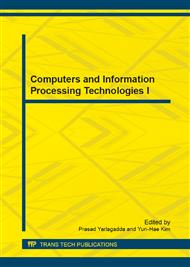p.617
p.621
p.626
p.638
p.642
p.646
p.650
p.658
p.665
Incomplete Data Recovery Using Linear Regression
Abstract:
During the last few decades, there has been a lot of interest on systems using large amounts of data. In practice, not every piece of information is available, and people have to deal with incomplete data. There have been a lot models proposed for this problem. In this paper, we propose a new approach for incomplete data recovery. This new approach is based on linear regression. We do some experiments on real-world data and show that this new approach is appropriate for incomplete data recovery and can produce very good results.
Info:
Periodical:
Pages:
642-645
Citation:
Online since:
June 2014
Authors:
Keywords:
Price:
Сopyright:
© 2014 Trans Tech Publications Ltd. All Rights Reserved
Share:
Citation:


